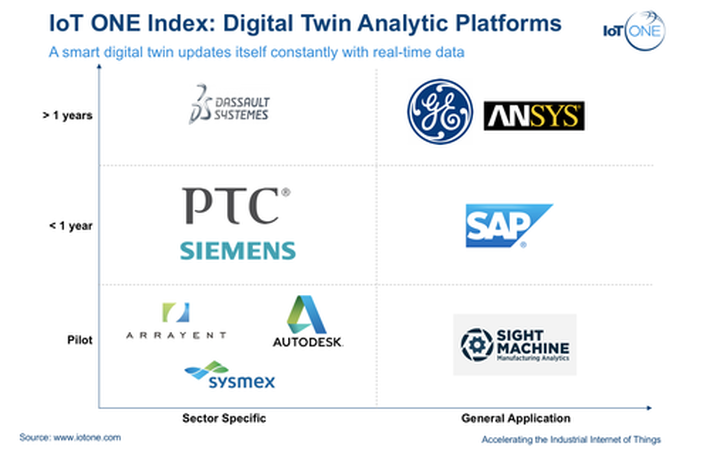
Published on 01/17/2017 | IoT Index
The concept of a digital twin is not a new one. But with the explosive growth of IoT, digital twins are now intertwined with physical assets, becoming a constantly evolving model with real-time information uploaded from sensors on equipments. This article seeks to explore the two tech giants who have explored the concept of digital twins, yet took on two different paths.
GE has invested billions in a data platform called Predix since 2011. Predix is an open ecosystem - the android-equivalent of IIoT - which doesn't just work with its own devices or machines. GE's long-term goal for Predix is for the system to be the dominant host of industrial "apps", such as clusters of field equipments.
When it comes to the digital twin concept, GE is seen to be "completely reinventing itself". If this concept were to take off in 2017, GE has plans to license the platform as-a-Service for other end-users to use.
While GE has chosen to stick hundreds of sensors onto a piece of equipment, Siemens is trying to digitise its customers' factories. Irregardless of the approach used, the feedback loop is now complete. Gone were the days when manufacturers have no concrete idea what the equipments will be used after they were sold: equipments are now sending back historical statistics on performance and specifications, while the digital versions built by GE and Siemens constantly updates itself.
Siemens' Product Lifecycle Management (PLM) software from Siemens can be viewed as both an information tool and a corporate strategy. As an information tool, it provides for a coherent data structure by consolidating different systems; as a corporate strategy, it allows globally operating companies to develop, manufacture and launch products as a team, while ensuring that best practices and new information are identified and documented.
Siemens emphasises on maintaining direct relationships with their customers, rather than have them interacting on a data platform.
Siemens’s attitude to its industrial customers’ data may also work better than GE’s. Whereas individual consumers are by and large willing to give up personal information to one platform, such as Google or Facebook, most companies try to avoid such lock-in. Whether they are makers of machine tools or operators of a factory, they jealously guard their data because they know how much they are worth. Both GE and Siemens say their customers will keep control of their data in the new digitised world, but the real question is who will own the algorithms that are generated using these data. GE claims ownership, Siemens is much less categorical.